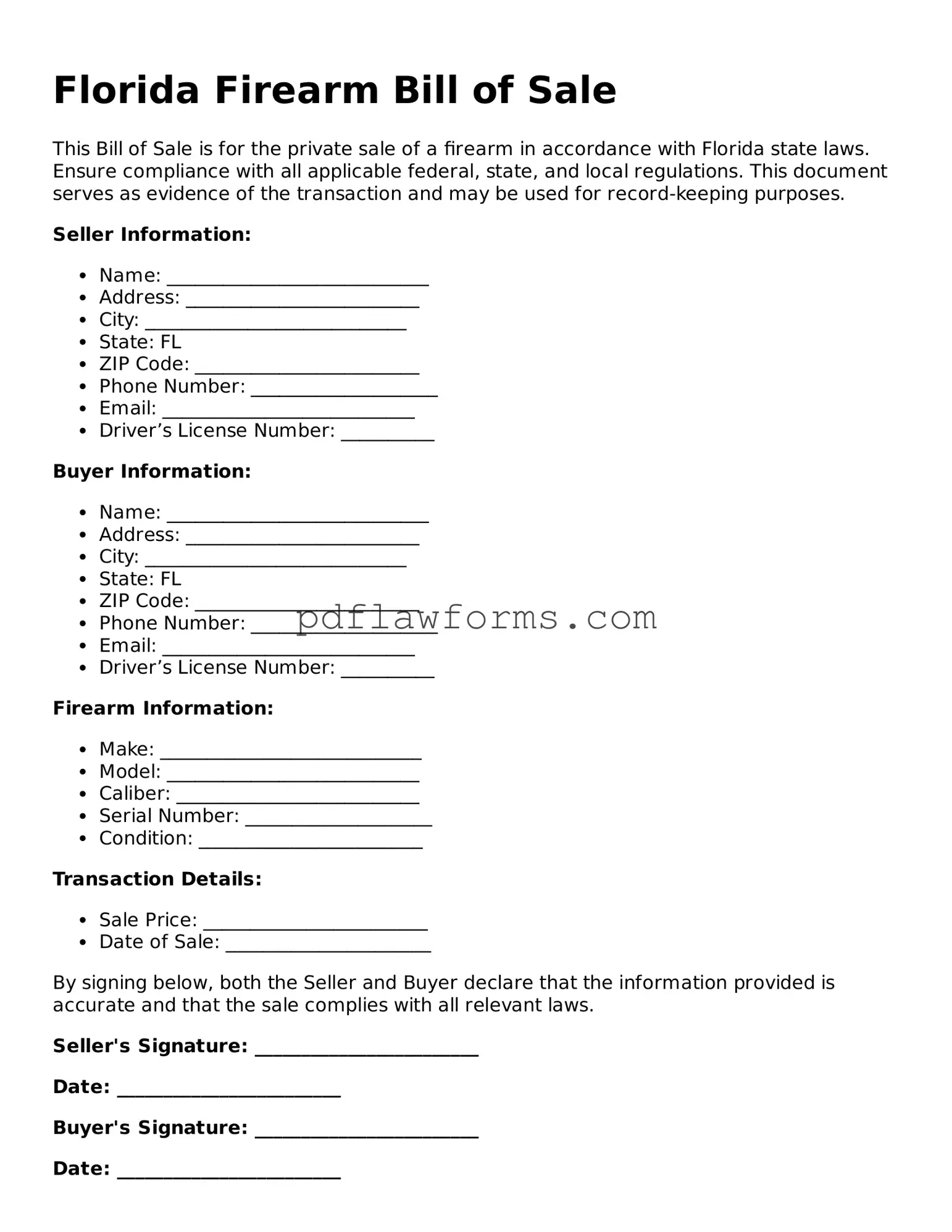Filling out the Florida Firearm Bill of Sale form can seem straightforward, but many people make common mistakes that can lead to complications. One frequent error is failing to include all required information. Buyers and sellers must provide their full names, addresses, and identification numbers. Omitting any of these details can invalidate the transaction.
Another mistake involves incorrect identification. Some individuals use outdated or incorrect ID numbers. Always double-check that the identification used matches the information on the form. This ensures that both parties are accurately represented and can avoid potential legal issues down the line.
People also often forget to date the form. A date is essential for establishing when the transaction took place. Without it, you may face challenges in proving ownership or the legality of the sale later on. Always remember to write the date clearly.
In addition, not signing the form is a common oversight. Both the buyer and seller must sign the document to make it legally binding. If one party neglects to sign, the sale may be contested, leading to disputes that could have been easily avoided.
Another mistake is using a generic or incomplete description of the firearm. The form should include specific details such as the make, model, and serial number. A vague description can create confusion and complicate future ownership verification.
Some individuals also fail to keep a copy of the completed Bill of Sale. Retaining a copy is crucial for both parties. This serves as proof of the transaction and can be important for future reference, especially in case of legal inquiries.
Lastly, misunderstanding the legal requirements surrounding the sale of firearms can lead to mistakes. It's important to know the laws governing firearm sales in Florida. Ignorance of these regulations can result in unintentional violations, so staying informed is key.
